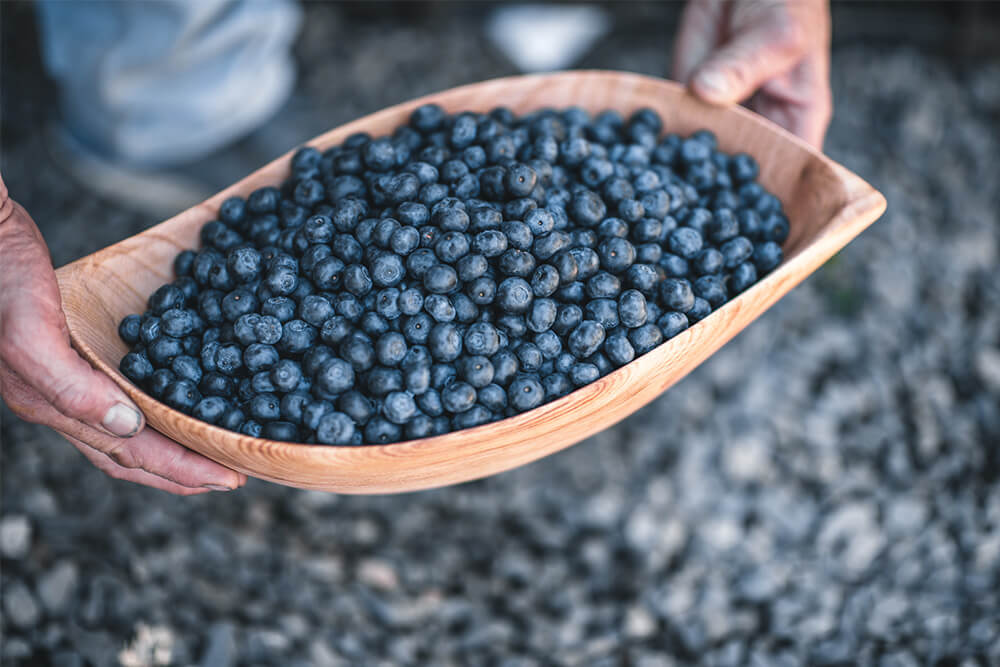Chile: Restructuring to Compete in a Crowded Market
- . April 18, 2025
EastFruit team continues to analyze global blueberry markets, and this is the third of our outlook reports dedicated to Chile – the first country to become a global powerhouse in exports of fresh blueberries. See also our outlook for Peru and general global blueberry production and trade outlook.
Chile was the world’s leading blueberry exporter for decades until Peru’s rise, and it remains a heavyweight in the industry. After facing several years of stagnant or declining exports, Chile’s blueberry sector is showing signs of stabilization and adaptation. The 2023/24 season saw Chile export over 86,000 tons of fresh blueberries, exceeding initial estimates (Chilean blueberries: progress in restructuring amid cautious eye on Peru) and reversing the downtrend of previous years. This was about a 7% increase over the prior season (2022/23), although still ~18% below Chile’s peak exports a couple of years ago. The Chilean Blueberry Committee noted that exporters took advantage of a tighter global supply situation to ship more fruit than expected, “highlighting the importance of Chilean supply for global markets” when opportunities arise.
Early-season growing conditions in Chile were favorable – cooler weather delayed ripening slightly, resulting in a steady harvest pace and excellent fruit quality in the first half of the season. However, as the season progressed, Peru’s much expanded late overlap did arrive, contributing to a flood of blueberries on the market that “surpassed those of previous seasons, consequently impacting prices”. In other words, Chilean growers now operate in a more crowded window, as Peru (and others like Mexico and Morocco) supply global buyers during what used to be Chile’s relatively competition-free export period.
To respond, Chile is undergoing a period of restructuring and repositioning. The industry has identified the need for a rapid transition to new cultivars and improved orchard management to boost fruit firmness, size, and post-harvest life. For years, Chile’s export packout suffered from older varieties that didn’t travel as well; this, combined with high sea freight times to markets, led to quality issues and buyer complaints. Now, variety replacement is accelerating: “Chile has years of experience and data to make the best decisions regarding technologies and varieties, with variety replacement already starting to showcase a renewed mix” (Chilean blueberries: progress in restructuring amid cautious eye on Peru). Many less competitive orchards have been or are being uprooted or shifted to frozen berry production.
The net planted area for fresh exports shrank for a few years as this culling took place, but the newer plantings coming online are higher yielding and targeted at fresh market standards. The Chilean industry is also investing in logistical improvements and new technologies to regain an edge. For example, better cold chain management and controlled atmosphere shipping are being pursued to ensure fruit arrives in peak condition after long transit.
Chilean exporters continue to benefit from a strong market presence in many countries. Continental Europe is the primary destination for Chilean blueberries (41% of exports in early 2025), followed by the United States (35%), with smaller but significant shares to Asia (South Korea ~8%) and the UK (~7%) (Chile’s blueberry exports rise 7% amid market shifts). This diversified market spread helps Chile weather demand fluctuations. Notably, Chile is a major supplier to Europe during the winter months, and European buyers have come to rely on Chile alongside Morocco and Spain for off-season fruit.
Read also: Moroccan Blueberries: A Global Success Story Driven by a Unique Selling Proposition
Chile’s primary advantage over the global market Peru in the blueberry sector lies in its diversified export markets, a result of coordinated industry efforts and proactive promotion by the Chilean Fruit Exporters Association (ASOEX). Association has been instrumental in promoting Chilean blueberries globally, including new strategies to enter Southeast Asian markets, such as Vietnam and Indonesia.
One trend worthy of note is the growth of organic blueberries in Chile – organics comprised about 12% of Chile’s exports recently, as growers cater to premium market segments.
Economically, Chile faces margin pressures that could influence its trajectory through 2030. A combination of rising labor costs, higher input costs, and relatively lower market prices in recent years has squeezed profits. Labor availability is a particular concern – growers report worker shortages and increasing wages, which complicate harvest and increase costs. Chile’s high interest rates have also made it difficult to finance new orchard investments or replanting, slowing the pace of much-needed cultivar upgrades. These macroeconomic factors have contributed to a “cautious industry mindset” and delayed response in some cases. Nonetheless, consolidation is underway: the number of Chilean blueberry export companies fell from 190 to 110 in the five years up to 2022/23, indicating some efficiency gains and professionalization.
By 2025–2030, Chile is expected to remain the second-largest global exporter, likely shipping on the order of 80,000–100,000+ tons annually if conditions are good. Growth will be incremental rather than explosive. Chile’s strategic advantage is its long experience and established customer relationships. If it can successfully complete its “repositioning” – focusing on quality, varietal innovation, and supply reliability – Chile should continue to be a “key player in the global blueberry market”, even as it cedes the volume crown to Peru.
18.04.2024





